Lewes have been a mainstay of the WSL Championship since 2018, when they achieved promotion from Women’s National League South.
Since then, they have maintained their standing in the division despite competing against sides with bigger financial backing from Premier League and Championship men’s sides.
Scott Booth took over the Lewes job in May 2022 following an unsuccessful spell at Birmingham City. Midway through this year, he finished ninth in his first season and found himself in the relegation zone with just seven points on the board.
However, results have recently picked up, and since the winter break, Lewes has won eleven points and looked a rejuvenated team.
In this tactical analysis, we will break down some of the critical differences that Scott Booth has made to improve the side’s form. This analysis will focus on the tactics and personnel changes and the impact that they have had on the side.
Formation Change
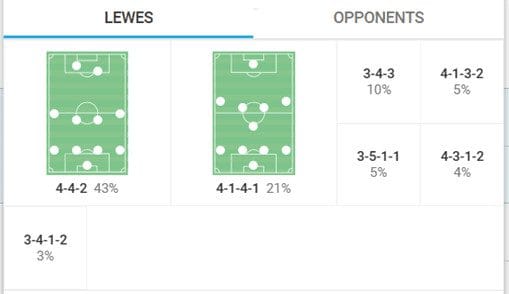
One of the key areas where Lewes have evolved through the season is in the shape they have deployed through the season. In the opening four games of the season, they deployed a back three and then tried a 3-4-3 and then 3-5-2 formations; when they deployed a back three, they won a solitary one point.
After these opening four games they switched to a 4-1-4-1 shape for the following four games. When deploying this 4-1-4-1 shape, they had very little success in terms of results, winning no points from these four games.
In mid-October, Lewes first used a 4-4-2 for their first win of the season against Watford. However, they went back to the 4-1-4-1 shape again before reverting back to the 4-4-2 shape and achieving far better results — 12 points came from the 10 games using the 4-4-2 shape.
We will now examine some of the key statistical differences between Lewes’ deployment of the three formations.
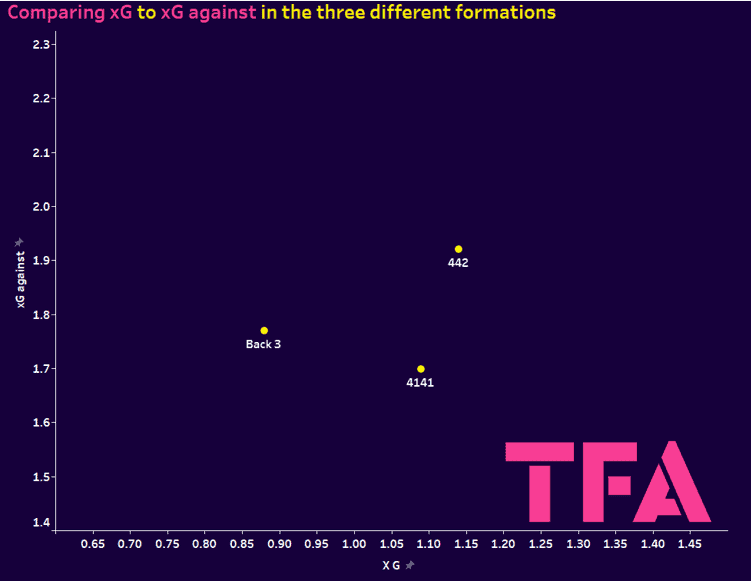
Here, we plot xG against xG when deploying the three different formations. What you can see is that when they utilise the 4-4-2, they create more goalscoring opportunities with an average xG of 1.14 compared to 1.09 and 0.88 for the 4-1-4-1 and back three shapes, respectively. However, despite this, they still concede an average xG of 1.92, which is the highest of the three formations.
This means that despite having more success with the 4-4-2 shape, the differences between xG and xG are similar amongst all three formation styles. The 4-1-4-1 actually has the best difference of 0.61 compared to 0.78 and 0.89 for the 4-4-2 and back three shapes.
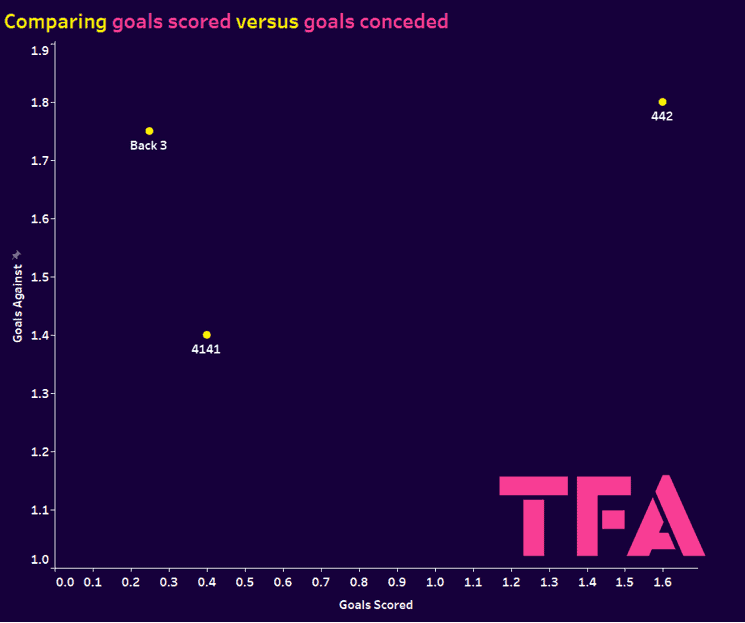
However, differences start to arise when we look at goals scored and goals against. What this graph shows is that when utilising the 4-4-2 shape, they have been significantly more effective in front of goal, averaging 1.6 goals per game. However, they averaged less than 0.5 goals per game when using the other two formations.
Interestingly enough, despite having more success in front of goal, they actually concede more goals per game when using the 4-4-2 formation. However, the key difference is that the difference between goals scored and goals conceded is significantly better when deploying a 4-4-2, at only 0.2 compared to the 1.0 and 1.5 of the 4-1-4-1 and back three shapes, respectively.
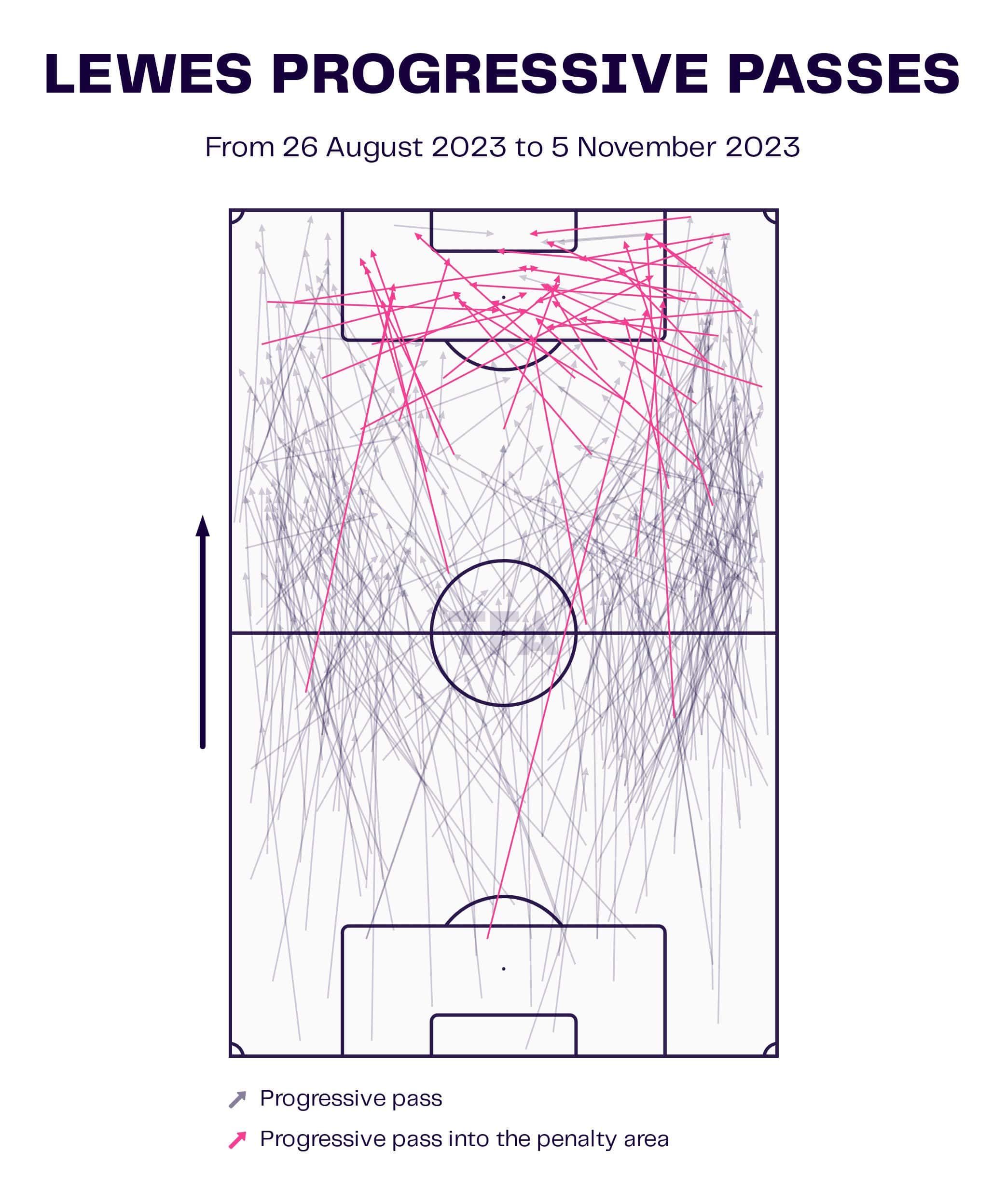
One of the reasons for the lack of success in the earlier two formations was the style of play they tried to deploy when playing. Particularly when playing in a back three, they looked to play out from the back and play through the opposition shape. However, they lacked the ability to be effective in this area, with the midfielders and forward players struggling to receive the ball between the lines and turn. As a result, the ball would generally either be lost in these areas, or the midfield would receive the ball and play it backward again.
This team’s failure in ball progression when playing a possession style of play can be further evidenced by the fact that they have completed the second-lowest number of progressive passes in the division, 56.53 per 90, with an accuracy of only 55.6%. This was only better than Blackburn, who have had much success operating a low block this season.
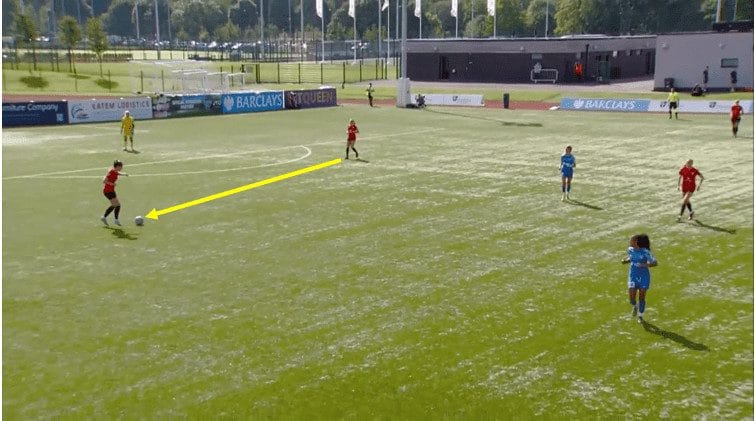
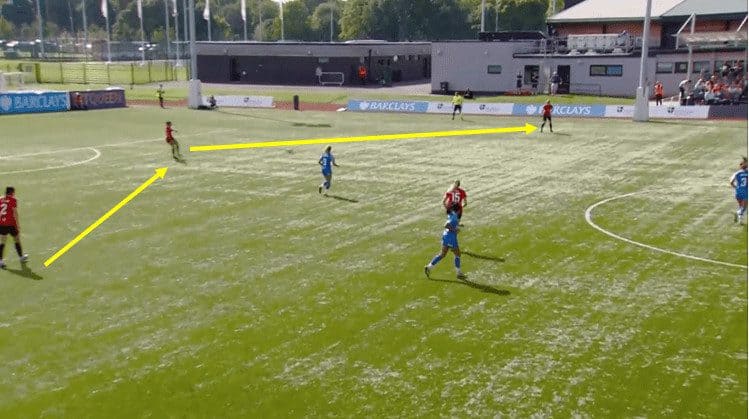
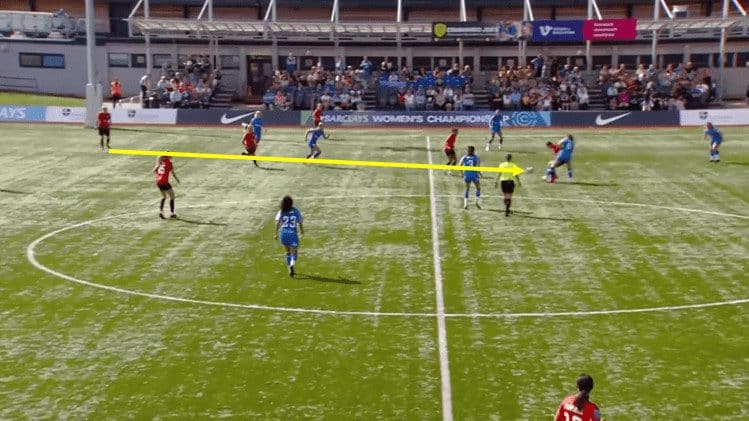
In this example, in a game against Durham early on in the season, you can see the issues that Lewes had with playing through the opponent’s shape. The ball is being played along the backline from Grace Riglar on the right through Rhian Cleverley to Ellie Hack on the left. Hack then tries to play a penetrating pass to centre-forward Valentine Pursey. Pursey is unable to bring the ball under control with backside pressure, and the ball is ultimately lost.
New Look frontline
Another key aspect to their success this season has been the new frontline following the winter break. With the signings of Aimee Claypole on loan from Chelsea and Chelsea Ferguson on loan from Brighton, arguably the most significant change was Grace Riglar’s position change from a right-sided centre-back to a goalscoring centre-forward.
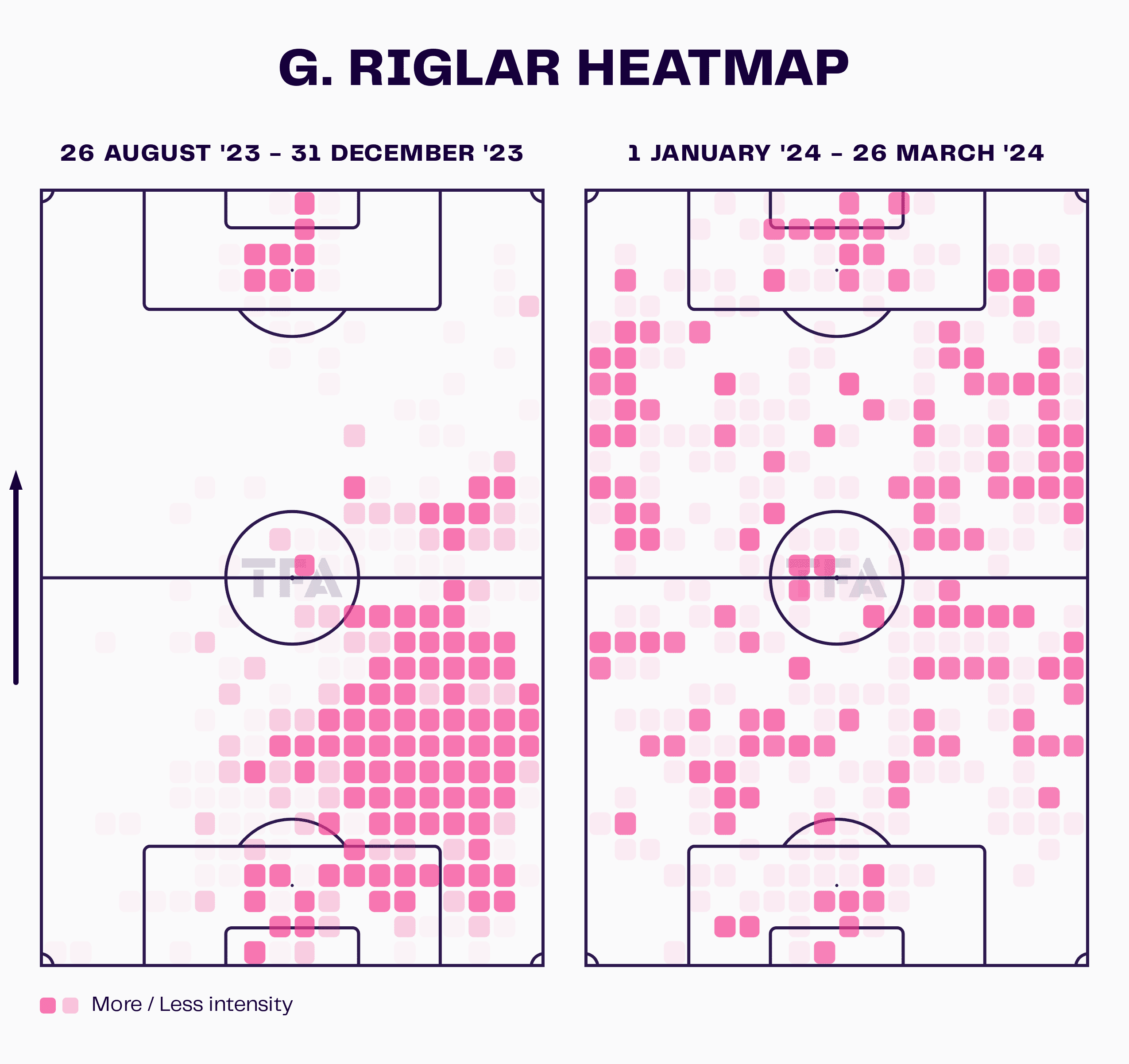
Here you can see a good representation of how before the winter break Riglar was being deployed as a right centre back and then after the winter break she was deployed as both a central defender and a centre back. This has been a big part of the recent success Lewes have had in front of goal. Having scored four goals in her seven appearances through the middle, exceeding her xG by 2.49 a pretty remarkable fact considering it’s a completely new position.
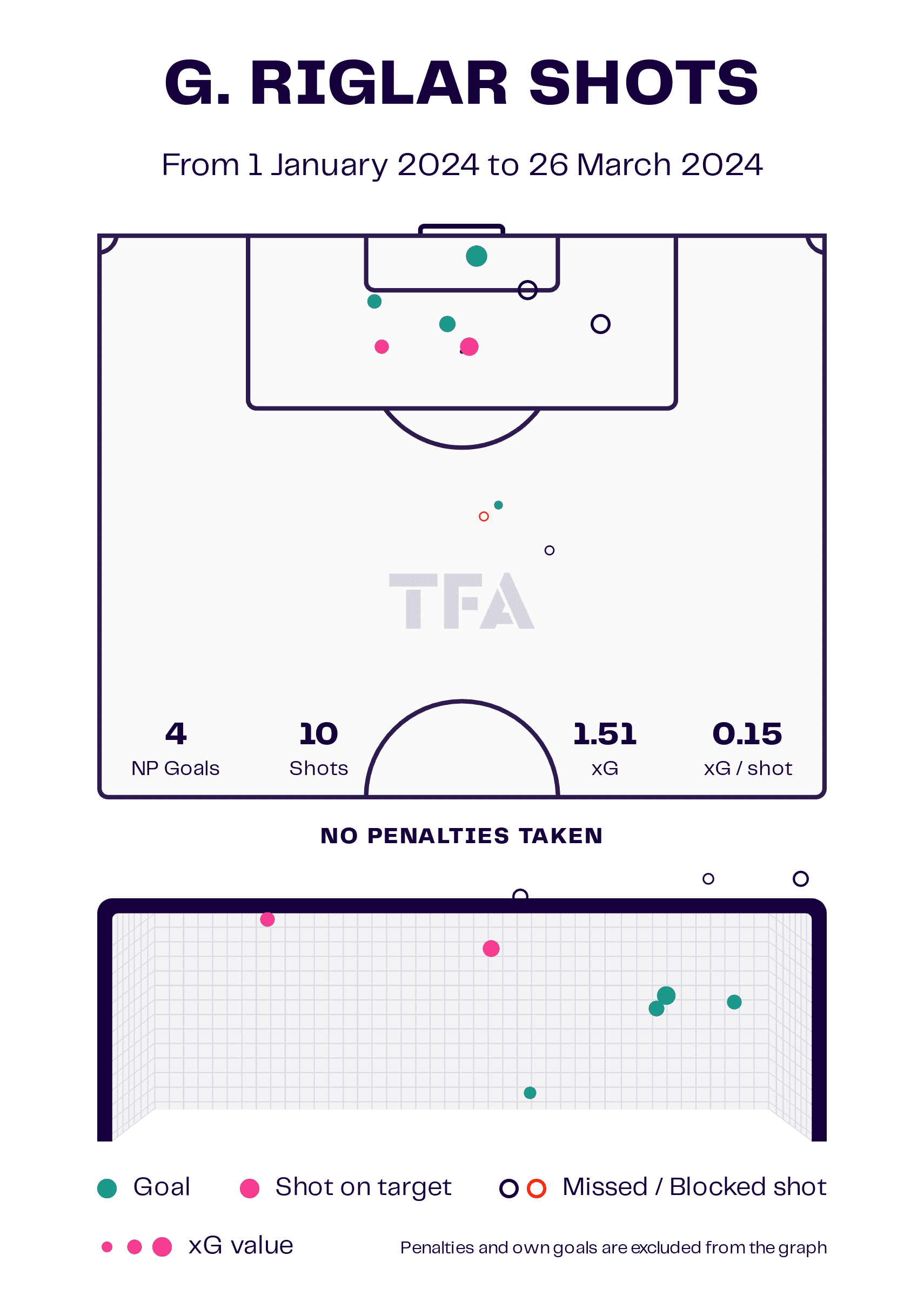
Riglar has been a vital part of the team, particularly as it has enabled Lewes to operate a front two. This means that they have had a consistent target to hit in the box, and that play has often been Riglar. This is a change of pace from early on in the season, when they deployed a sole striker who often became isolated and, as a result, could be pulled across the field. This, in turn, would leave a lack of options to hit the box.
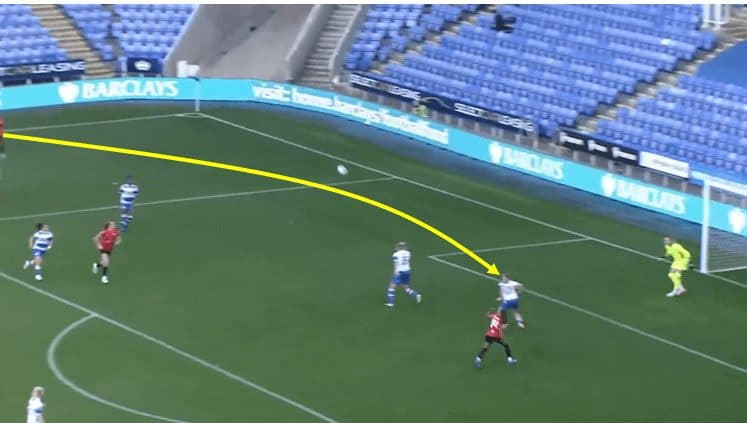
Here, you can see Lewes’s lack of effective options in the box. The young winger Reanna Blades is the only option in the box, and she tries to sneak behind the Reading player rather than attack the ball in the middle.

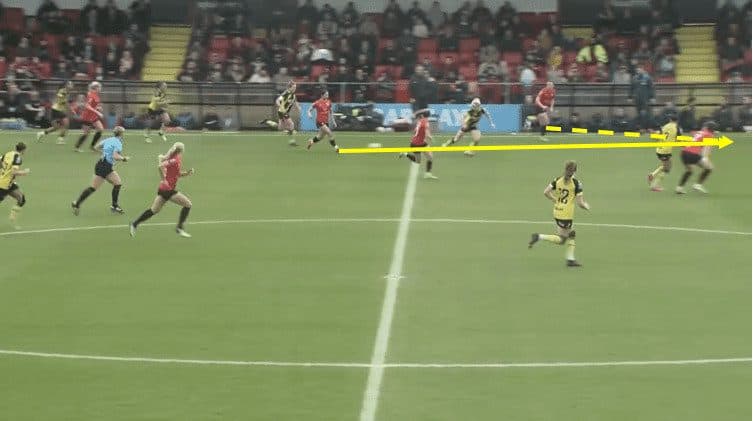
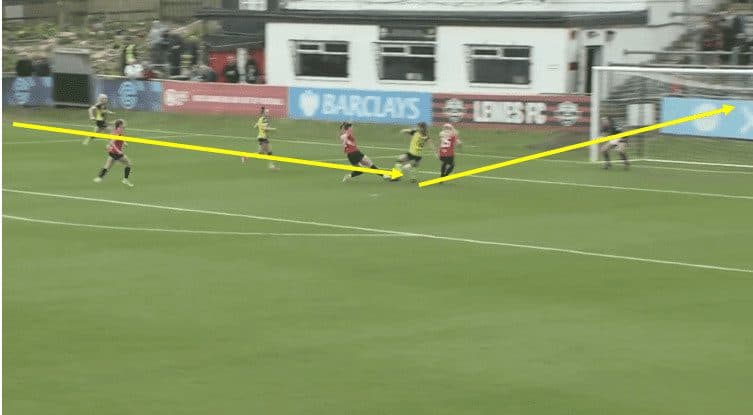
In this crucial goal against Watford, winger Maria Farrugia is able to carry the ball through three Watford players. Riglar’s strike partner Claypole has then made a run into the wide channel and receives a through ball from Farrugia. Claypole carries the ball down the byline before playing the ball across the box to Riglar, who times her run expertly to finish off the goal. This earned Lewes three crucial points against a fellow relegation battle competitor.
Another key part of the new-look front three is the role of signing Claypole, who has been the most common partner to Riglar. Claypole has a different briefing from Riglar and is asked to be a more mobile player to run into wide channels and challenge the opposition in behind. This enables Lewes to have different styles of outlets to hit when trying to play more directly.
This ability to play more directly has flipped the mentality when playing out from the back. When previously they looked to try and penetrate the opposition shape, now they look to draw the opposition out by playing amongst the backline before playing a long ball to Riglar with her back to goal or playing a ball for Claypole, who has the strength and size to be a target from aerial balls or the speed to burn teams in behind.

Here, you can see Lewes, this time in white, against Charlton. Goalkeeper Sophie Whitehouse has launched a long aerial ball for Riglar to compete for. What is interesting to also note is the pocket of Lewes players waiting to compete for that second ball.
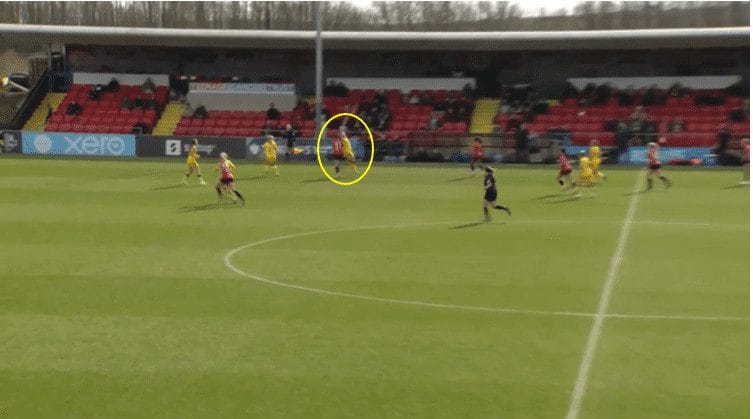
In this example, Whitehouse launches a long aerial ball forward. This time, Claypole competes for the ball and forces a poor header, which goes backwards and enables Claypole to remain in pursuit of the ball. She eventually forces a poor clearance from Sheffield, and Lewes is able to compete for a loose ball.
Winter Signings making a difference.
Another area that Lewes has developed since the winter break is through their other two major winter signings. Bringing in left back Lois Heuchan from London City Lionesses and Scotland international Hannah Godfrey from Charlton.
First, let’s look at Heuchan’s impact on the side. Heuchan is a naturally left-footed left-back who balanced Booth’s side better. Previously, they had been deploying Caragh Hamilton or Shaun Vassell, who are natural right-backs. This made it awkward for them to receive the ball and helped Lewes play around a press. It additionally limited their ability to overlap teammates in attack.
As a result, the signing of Heuchan gave Lewes a naturally left-footed crosser of the ball. Not only did this enable Heuchan to overlap and get balls into the box from down the line, but it also gave Booth the ability to utilise inswinging crosses from set pieces, which they have really looked to target in the second half of the season.
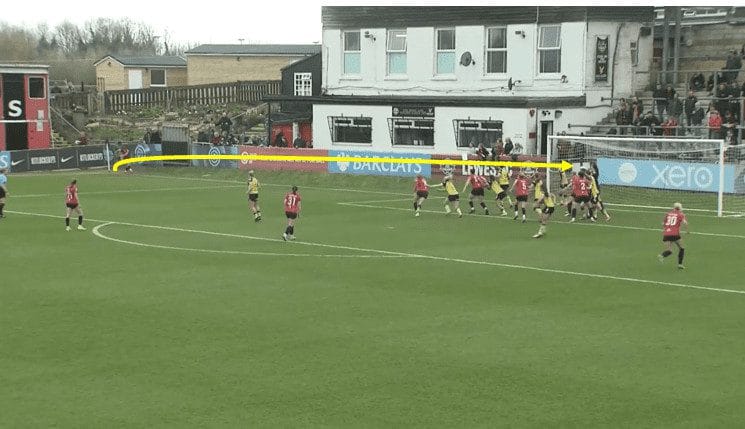
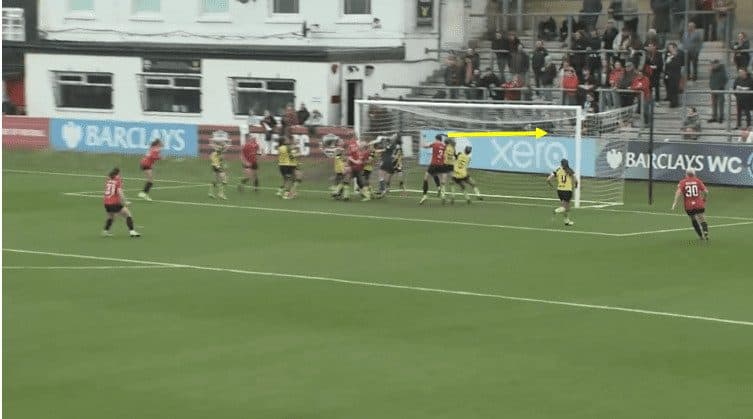
This example shows the new style of set pieces deployed from Lewes. The team previously operated a variety of short corners where they looked to switch the point of attack. However, they now look to flood the six-yard box with big players and force mistakes out of the opposition. In this case, Farrugia’s inswinging ball results in a Riglar header from about half a metre out from goal.
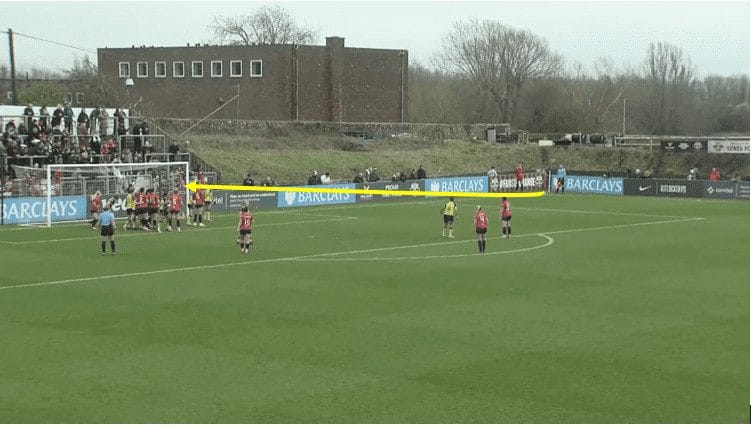
This example shows the versatility that Heuchan offers Booth’s side at set pieces, with them being able to deploy a very similar routine from the opposite side, with Heuchan playing an inswinging cross into a congested box. Unfortunately, nothing came from it on this occasion.
In addition to being an excellent crosser of the ball, Heuchan has shown to be an excellent ball winner and can tightly mark opponents and step in to consistently win the ball back for her side. Heuchan has the fourth most possession-adjusted (PAdj) interceptions this season with 10.84.
This is then supported by the rest of the backline, which is in the top 20% of players in the division for possession won back, with Hamilton with a PAdj of 9.77, Ellie Hack on 9.55, Godfrey on 7.6, and midfielder Hollie Olding with 8.49.
This has all led to Lewes becoming a better, more aggressive, pressing side. Their PPDA in the first half of the season was 8.12, while in the second half of the season, if we exclude the game against Charlton as an outlier, with a PPDA of 17.12 in that game, they averaged a PPDA of 6.76.
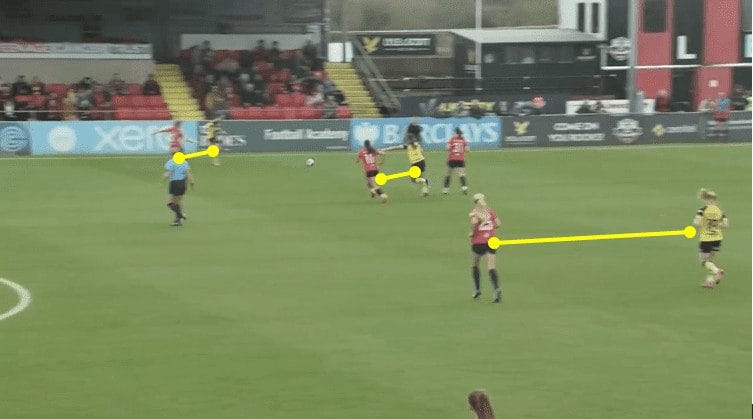
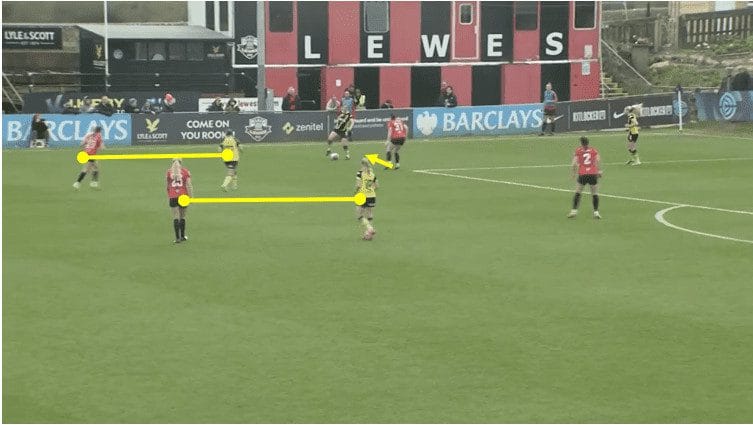
Here, you can see Lewes’ intentions to press, with Watford looking to play out from the back using double pivots. Lewes matches them up in the midfield by pulling left winger Farrugia across to mark one pivot while Jacqueline Hand marks the other pivot player. At the same time, Hollie Olding operates as the sweeper, tracking anything looking to break the opposition lines. You can also see how Heuchan has pushed up and is tight to the Watford wingback, forcing them to play it backwards.
When it’s played backwards, you can see how Lewes has compressed one side of the field with Claypole’s body shape preventing the ball from going back across to the centre-back or goalkeeper while Riglar is alert for any switches attempted across the field. This eventually forces a long switch pass from the opposition, where Lewes can compete for the ball.
A key aspect of Booth’s side’s transition into a more effective pressing side is the development of Olding, whose ability to adapt and read the game has proven vital to the team’s success in this aspect. With her often visibly controlling the press on the field, she has demonstrated the ability to sit in the back line to form a back three, cover in the back line when in transitions, or make vital ball recoveries in the midfield.
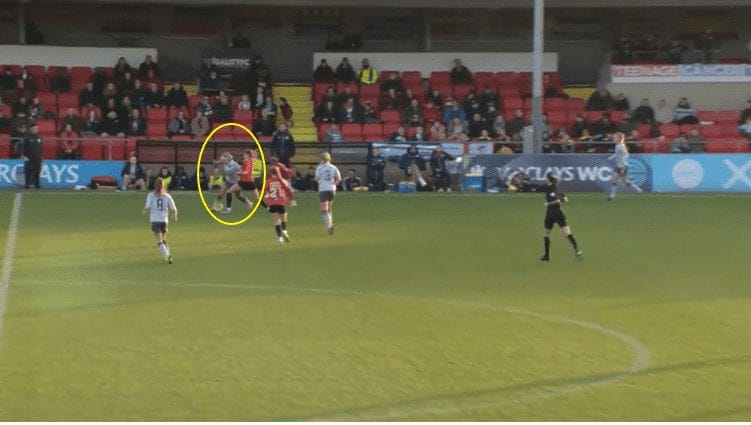
Here, you can see the value of half a tough tackling midfielder in Olding. Olding uses her length to get a foot in and make an effective tackle in the midfield, which recovers possession for her side.
Throughout the season, she has been averaging 8.83 successful defensive duels per 90 at a success rate of 72.6%, which puts her amongst the top performers in the division in her position.
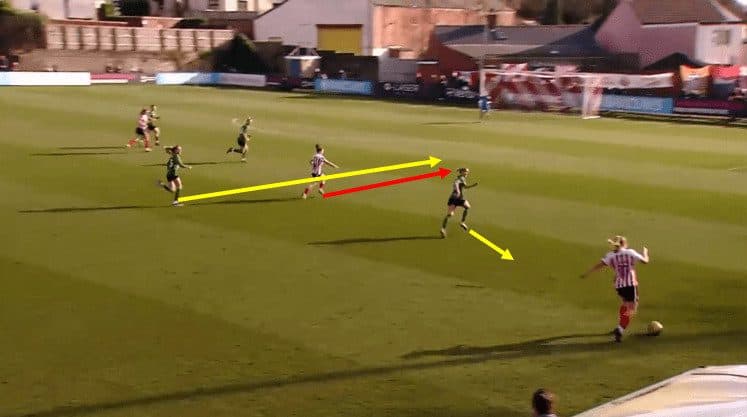
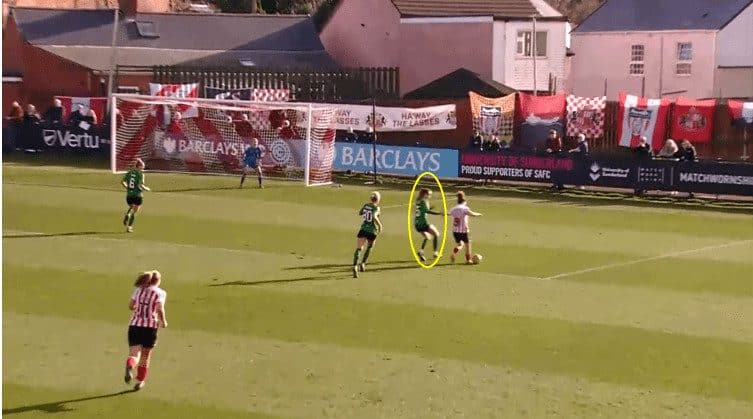
Here, you can see the importance of Olding’s versatility and game understanding, with Heuchan being drawn out wide to deal with the Sunderland winger. This disconnects the backline, which Sunderland number nine Mary McAteer exploits. Olding identifies this and can prevent any real danger coming from it.
Conclusion
As you can see, Scott Booth has found several creative solutions to help Lewes adapt and has seen the side’s recent results improve following a difficult start to the season. He was successful in several areas and getting more out of his side than in the first half of the season.
When writing, Lewes sits second last in the table, two points from safety behind Reading. With some crucial games ahead, Booth will be hoping that this recent resurgence of form post-winter break can continue and that they can make an unlikely escape from the drop.






Comments